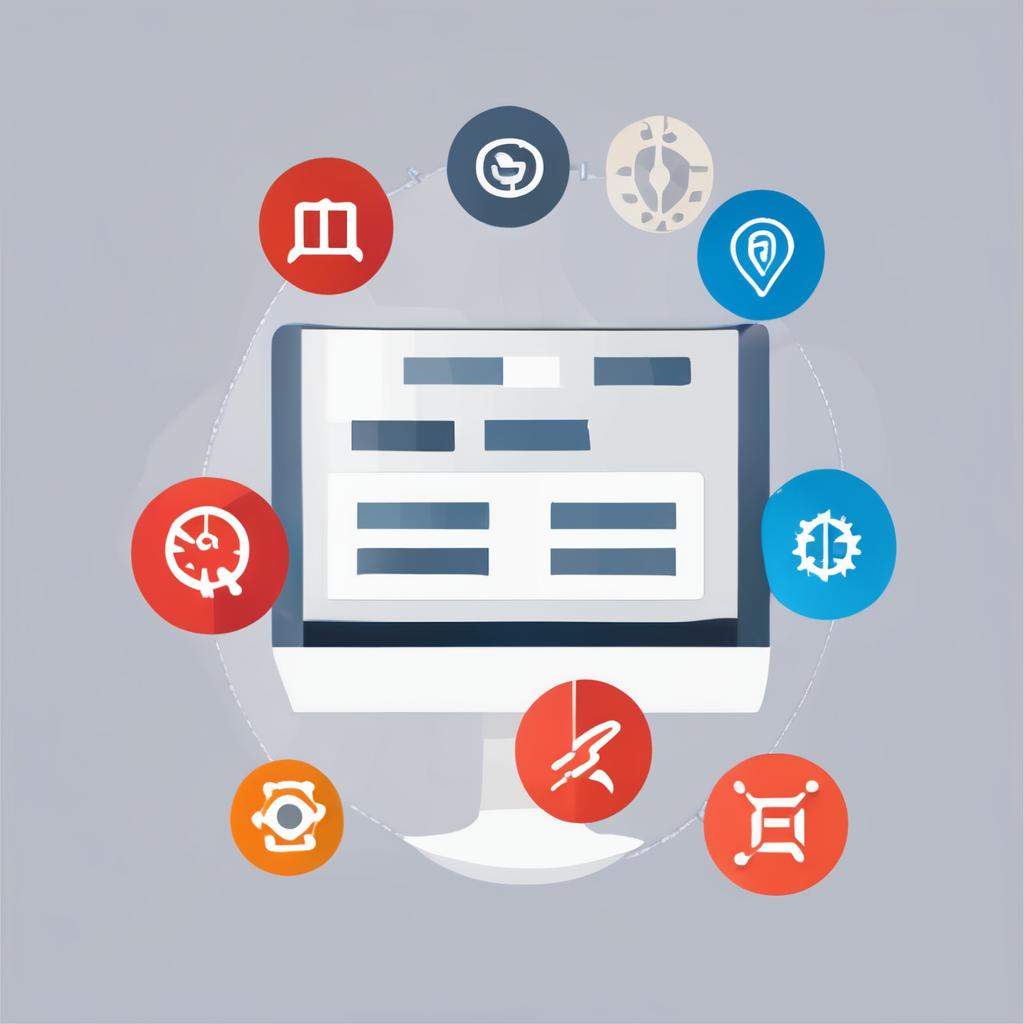Understanding WordPress Security Risks
Navigating the landscape of WordPress vulnerabilities is crucial for anyone managing a website today. Security threats often emerge from outdated themes and plugins, which can serve as gateways for attackers. WordPress’s popularity makes it a target, with recent security breaches highlighting the need for vigilance.
An alarming incident occurred when a major plugin flaw allowed hackers to gain unauthorized access to thousands of sites. Such vulnerabilities demonstrate not just risks but also the importance of awareness in site management. Understanding common threats is the first step in implementing effective defenses.
Topic to read : Mastering machine learning deployment: the ultimate guide to using aws sagemaker for success
There are several types of security threats specific to WordPress: injection attacks, cross-site scripting, and brute force attacks being just a few. Additionally, the human factor cannot be neglected—weak passwords and unmonitored user accounts remain key contributors to site breaches. Therefore, constant vigilance and education in security practices are non-negotiable.
Regularly educating yourself and your team about WordPress vulnerabilities helps in designing better preventive measures. Conducting frequent security audits and updating themes are proactive ways to maintain security. Staying informed not only safeguards your digital assets but also fortifies user trust, providing a secure digital environment.
Additional reading : Unlocking robust microservices communication: a comprehensive guide to essential mtls techniques
Essential Security Techniques for WordPress
Employing security techniques and protective strategies is paramount in maintaining a secure WordPress site. Ensuring strong passwords is a fundamental step in safeguarding your website from unauthorized access. Use a mix of upper and lower case letters, numbers, and symbols to fortify your passwords. Changing them regularly adds an additional layer of protection.
Regular updates for themes and plugins are critical to preventing vulnerabilities. Developers frequently release updates to address emerging security gaps. When you neglect updates, you expose your site to potential exploits. WordPress makes it accessible by notifying you when updates are available; ensure that you act promptly.
Enabling two-factor authentication significantly boosts security by requiring an additional verification step from the user. This method protects against unauthorized access even if login credentials become compromised. Many plugins offer this feature, integrating seamlessly with WordPress.
Adopting these best practices fosters a secure web environment. Regular updates, robust passwords, and two-factor authentication work collectively to shield your site from threats. Embracing these strategies not only helps in thwarting potential breaches but also reassures users that their data is handled with utmost care.
Recommended Security Plugins
To fortify your WordPress site against vulnerabilities, utilizing security plugins is essential. These tools provide an additional layer of protection and can significantly enhance your site’s security framework.
Overview of Popular Security Plugins
Several standout security plugins come recommended for WordPress users. They offer comprehensive protection by addressing varying aspects of security—from monitoring and regular scans to firewall integration and real-time alerts. Notable names include Wordfence, Sucuri Security, and iThemes Security. Each plugin has unique features that cater to different security needs, ensuring that you can find an ideal match for your website.
Features to Consider When Choosing a Plugin
When selecting a WordPress tool, consider features such as real-time threat detection, brute force protection, and firewall integration. Additionally, automated backups and malware scanning are critical. Plugins that offer configuration options tailored to your site’s needs and provide regular updates generally ensure more robust security.
Comparing Free vs. Premium Security Plugins
Free plugins offer basic protection, which may be sufficient for smaller sites, while premium options provide advanced features such as priority support and deeper insights. Examining your specific needs and budget will help you decide whether to invest in a premium plugin. This choice will bolster your site’s defense strategy accordingly.
Best Practices for User Management
Effectively managing user roles and access control is pivotal in safeguarding your WordPress site from potential breaches. Begin by defining clear user roles that correspond to users’ actual responsibilities. Assign the minimum level of access necessary, ensuring that users only have permissions required for their tasks. This minimises the risk of unauthorised access or accidental mishandling of critical site elements.
Regularly audit user accounts to identify and remove any unused or redundant accounts. Dormant accounts are vulnerable points of entry that malicious actors could exploit. Routine checks ensure that access privileges remain relevant and secure.
Educating users is a fundamental component of your user management strategies. Encourage training sessions and workshops to raise awareness about security practices and the importance of maintaining strong passwords. Users should also be discouraged from sharing credentials, which can compromise security integrity.
Implement a system for monitoring user activity, which can serve as an early warning system for unusual behaviour. Real-time alerts offer immediate notice of potentially suspicious actions, enabling quick response. By engraining these strategies, you foster a proactive security-minded culture, critical for long-term site protection.
Secure Hosting Recommendations
Choosing the right secure hosting provider is crucial for optimum website security hosting. Identifying key features that contribute to security can guide you in making the best choice. Look for providers that offer firewall protection, malware scanning, and automated backups. These features ensure your website is safeguarded against threats.
Key Features of a Secure Hosting Provider
When selecting a hosting provider, consider the level of encryption they use to protect data. High-grade encryption is essential for secure data transfer between users and your server. Additionally, hosting providers offering DDoS protection can help mitigate the risk of attacks aimed at overwhelming your website’s resources.
Comparative Analysis of Top Secure Hosting Services
Several hosting providers boast strong security reputations. For instance, SiteGround and Bluehost are known for incorporating robust security measures such as SSL certificates and daily backups. Conducting a careful comparison based on your specific needs will help in identifying the best fit.
Importance of Regular Backups in Web Hosting Security
Regular backups are the unsung heroes of website security hosting. They provide a safety net, allowing you to restore your site to a previous state if compromised. By ensuring backups are automated and occur frequently, you mitigate potential data loss and maintain site integrity.
Monitoring and Response Strategies
Ensuring effective site monitoring and incident response is key to maintaining a secure WordPress environment. Monitoring tools, like Wordfence and Sucuri, offer real-time threat detection to safeguard your site from potential breaches. By keeping a vigilant eye on suspicious activities, you can act swiftly to prevent damage.
Tools for Monitoring WordPress Site Security
Employ tools that offer comprehensive security alerts and audit logs. These features help identify anomalies and track changes efficiently. Regular alerts enable proactive threat management, quickly notifying site administrators of potential issues.
Developing an Incident Response Plan for Breaches
Constructing a robust incident response plan is crucial. The plan should outline specific steps for addressing breaches, including identifying the threat source and employing a containment strategy. Engaging in regular drills ensures your team is prepared to respond promptly in emergencies.
Importance of Regular Security Audits and Assessments
Conduct regular security audits and assessments to evaluate your site’s defense mechanisms. Audits involve checking for outdated components and unenforced security measures. By continually assessing the security landscape, you can update your site’s defenses, ensuring ongoing protection against evolving threats.
Visual Aids and Resources
Enhancing your WordPress security strategy can be streamlined by incorporating security checklists and other visual aids. Such tools provide a tangible reference, helping you and your team adhere to best practices consistently. For instance, a checklist detailing essential updates, password protocols, and plugin management ensures no crucial step is neglected.
Creating downloadable resources like guides and templates can further support user engagement and fortification efforts. These resources serve as educational tools, empowering users to comprehend and act upon security protocols effectively. By offering accessible materials, you encourage proactive participation in site safety.
Visual aids, such as infographics and flowcharts, are particularly useful for breaking down complex security concepts into easily digestible elements. They offer clear explanations of intricate procedures like two-factor authentication and threat detection. This clarity aids users in grasping necessary actions without becoming overwhelmed by technical details.
By integrating these visual tools into your security framework, you foster a practical understanding of WordPress vulnerabilities and site breach prevention. This not only enhances user experience but also ensures robust engagement with security measures, fortifying your site against potential threats.











